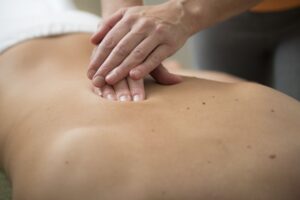By Sharon Oliver, Contributing Writer

REGION – For many, rest homes and elderly people immediately come to mind after hearing the word “geriatric.” However, when it comes to geriatric massage therapy, the treatment technique benefits are for everyone no matter the age. The idea is to reduce stress, improve sleep and posture, and boost blood circulation and lymphatic flow. There are different types of massage therapies such as deep tissue, and hand and foot massages. However, a geriatric massage requires a lighter touch, is geared towards those who are less active, and it strengthens one’s immune system by releasing toxic substances within the body and is more suitable for those experiencing pain.
As we get older, blood circulation tends to slow down and serotonin wanes over time. With this type of massage therapy, the hormone is released, leading to higher melatonin levels and better sleep. This can help eliminate the reliance upon sleeping pills. Various studies have shown that older adults who receive geriatric massages are less likely to fall ill than those who don’t get one. Tonya Brooks is co-founder and a licensed massage therapist at Wings Wellness Medical and Integrative Massage in Stoughton, which offers geriatric massage therapy. “Whether you seek services for pain mitigation, post-surgical swelling relief, or stress reduction, I can help you achieve your goals,” she said.
Considerations and benefits
When considering a geriatric massage, there are factors to be weighed, like the client’s skin condition, pain threshold and types of medications prescribed. Therefore, finding an adequately trained massage therapist is very crucial. The technique requires a gentle touch, and the therapist should understand certain psychological factors especially since many of these clients are older and may lack physical contact with others on a regular basis.
A geriatric massage can help reduce damage following a stroke, stimulate paralyzed areas and help regain movement. While doctors often advise bed rest, they usually stress the importance of staying physically active as well. Such therapy may also have an impact on the client’s mental well-being. A therapeutic touch can provide comfort and relaxation especially for anyone dealing with stress, loneliness, depression or anxiety.
Research results
A Trusted Source clinical study found that a six-week period of massage therapy helped reduce stress and aggressive behavior in those suffering with dementia.
In the International Journal of Older People Nursing, 14 studies related to aging residents of a residential care facility indicated that geriatric massages could enhance the health and well-being of those in residential care.
Another study found that 12 older adults who received hand and foot massages experienced positive feelings afterwards.
Qualifications and techniques
In order to become a therapist who specializes in geriatric massages, proper training is necessary with the following topics likely to be discussed during training programs:
- Indications and contraindications for massage with elderly adults
- Massage techniques used in geriatric massage
- Hands-on practice with elders
- Business practices for the elder community
- Providing massage to elders with particular health challenges
- Wheelchair massage
Modifications made to traditional massage techniques include shorter sessions, passive movement of leg, foot, and shoulder joints and gentle massage of uninflamed joints of the feet and hands. While there are such things as age-related health conditions, issues like arthritis, strokes, diabetes or even pain can strike anyone. Skin conditions like diabetes and kidney disease can cause dry skin with some medications causing itchiness and scratchiness. Muscle stiffness is often another problem. Therefore, passive stretching is used to ease muscle tension. A qualified therapist would need to know what techniques to use so as not to cause skin irritations as well as be sensitive to proper positioning and keeping the client comfortable.
RELATED CONTENT:
Westborough woman channels cancer experience into massage therapy career (fiftyplusadvocate.com)
What is CBD and what ailments can it help? (fiftyplusadvocate.com)
Humor offers benefits to feeling better and improving outlook (fiftyplusadvocate.com)












